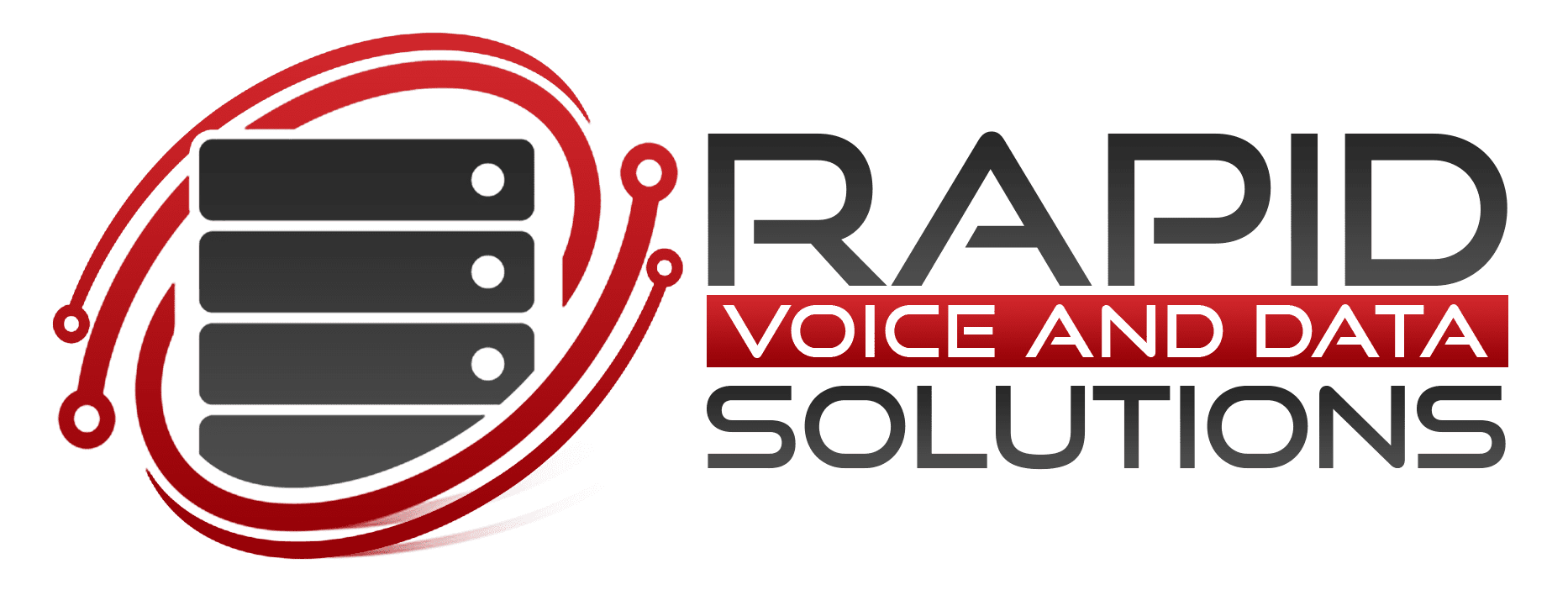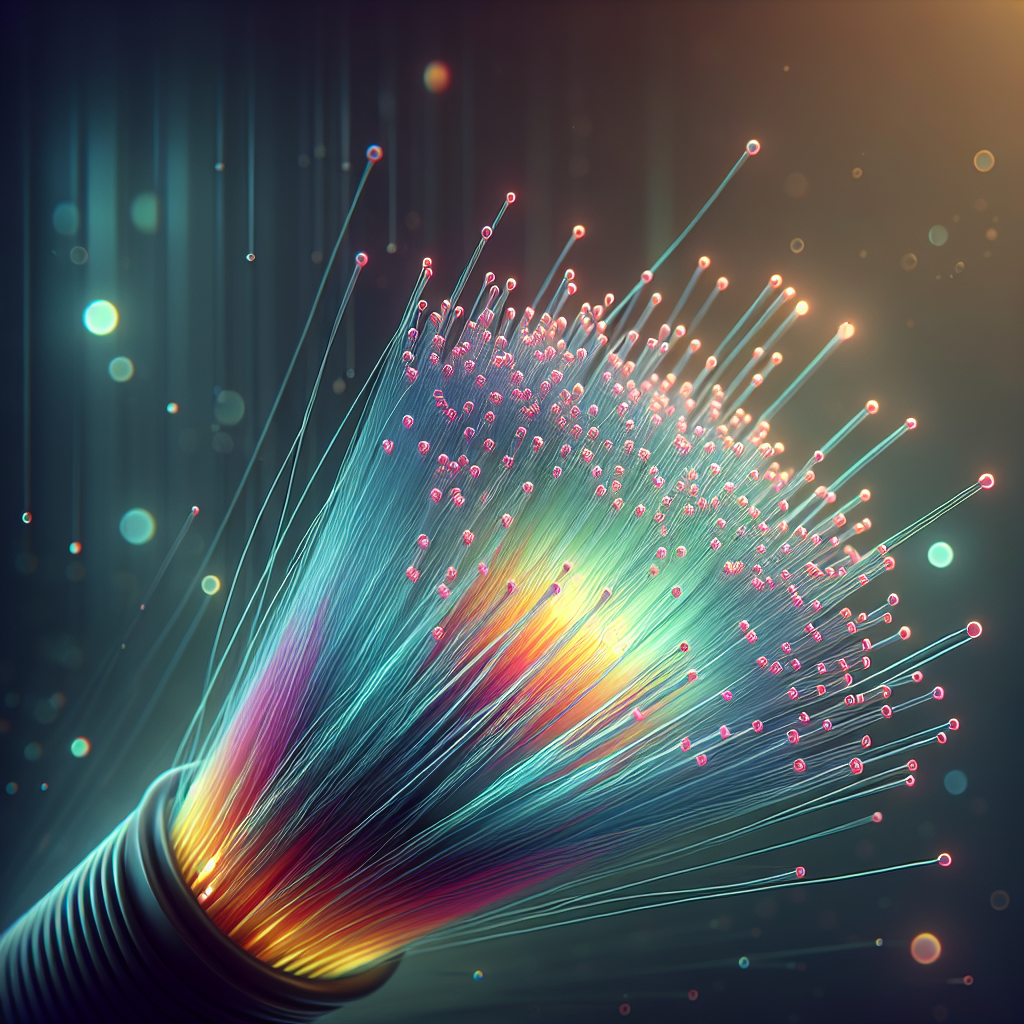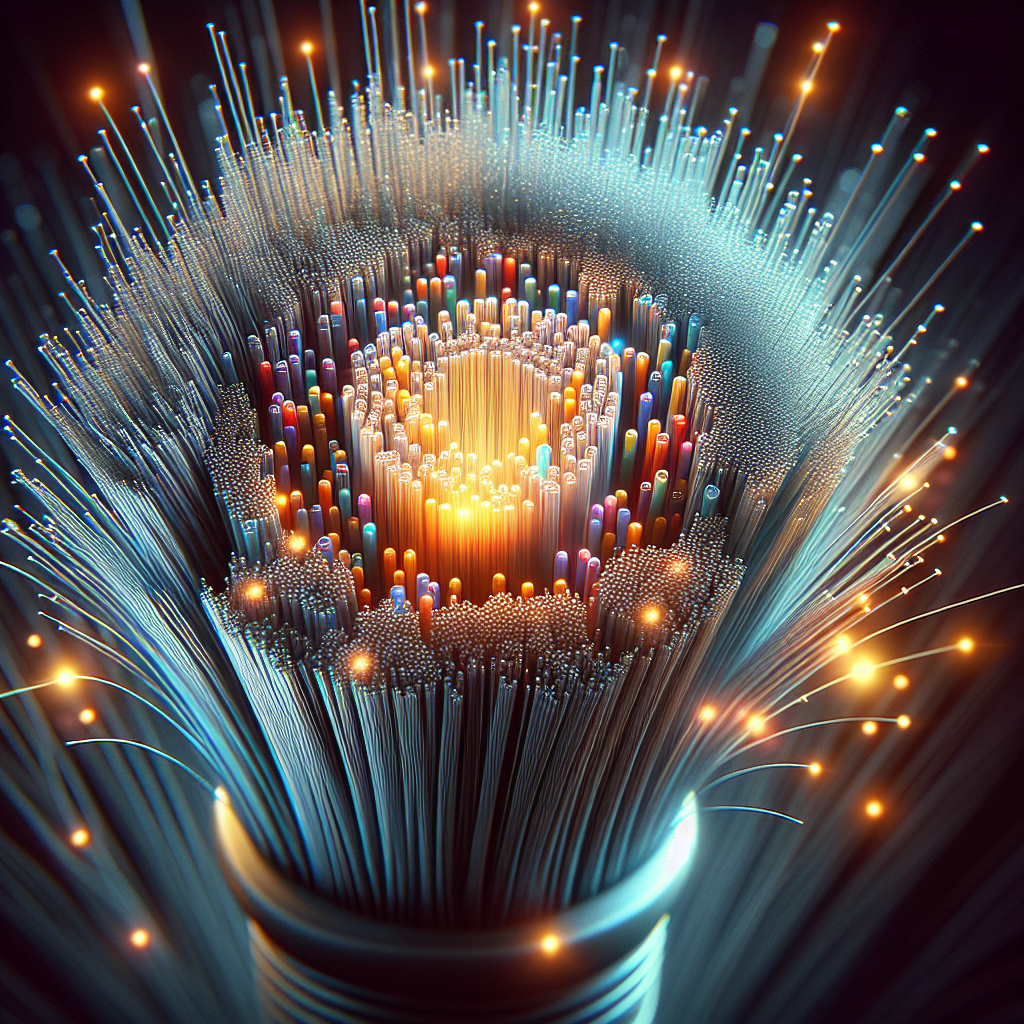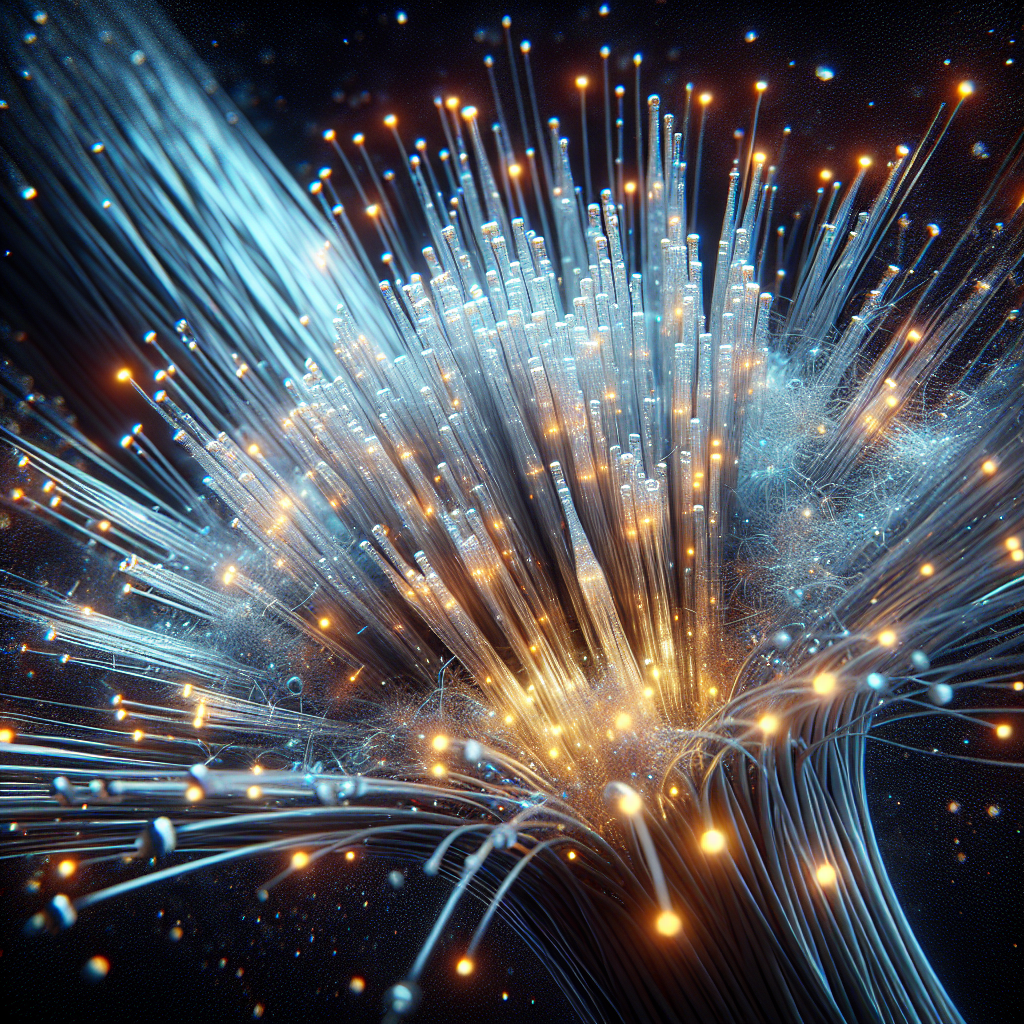Fiber optic cables are revolutionizing the way we transmit data, voice, and video across great distances. These cables are composed of thin strands of glass or plastic fibers, each about the diameter of a human hair. They carry information in the form of light signals, which enables high-speed transmission with minimal loss of signal quality.
Unlike traditional copper cables, which transmit data using electrical signals, fiber optic cables use light to carry information. This fundamental difference allows for vastly higher bandwidth, meaning more data can be transmitted at much faster speeds. As a result, fiber optics are the backbone of modern communication networks, including the internet, telephone systems, and cable TV.
Understanding what fiber optic cables transmit is crucial for anyone involved in IT, telecommunications, or any business that relies on high-speed data transfer. With their ability to handle large amounts of data efficiently, fiber optic cables are essential for meeting today’s ever-growing demand for fast, reliable communication.
Visit our website to learn more and get started today! Click here.
Mechanism of Data Transmission
The mechanism of data transmission in fiber optic cables is both fascinating and highly efficient. At its core, the process involves converting electrical signals into light signals using a device called a transmitter. This light is then sent through the optical fiber, where it travels by a process known as total internal reflection. This allows the light signals to bounce along the interior of the fiber without escaping, even if the fiber is bent.
A fiber optic cable typically consists of a core, cladding, and a protective outer coating. The core is the innermost part, made of glass or plastic, where the light travels. Surrounding the core is the cladding, which has a lower refractive index to keep the light signals contained within the core through total internal reflection. The outer coating protects the delicate fibers from environmental damage.
Light signals in fiber optics are transmitted in binary code – the fundamental language of computers – where light pulses represent binary ‘1’ and no light pulses represent binary ‘0.’ These light pulses can travel long distances with minimal loss of signal strength, thanks to the low attenuation properties of the fiber material. Signal amplifiers or repeaters can be used to boost the signal for even longer distances, ensuring the data remains intact and undistorted.
This mechanism enables fiber optic cables to transmit data with incredible speed and reliability, making them the preferred choice for high-speed internet, telecommunications, and various other applications.
Types of Signals Carried
Fiber optic cables are renowned for their ability to carry a wide range of signals with unparalleled efficiency and clarity. Understanding the types of signals these cables can transmit is crucial for appreciating their versatility and widespread adoption.
The primary types of signals that fiber optic cables carry include:
- Data Signals: These are the most common signals transmitted via fiber optics. They include internet data, which encompasses everything from email communication to streaming services. The high bandwidth capabilities of fiber optics make them ideal for handling large volumes of data at high speeds.
- Voice Signals: Fiber optic technology is also extensively used in telecommunications. Voice signals are converted into digital data and then into light signals, which are transmitted through the fiber optic cables. This results in crystal-clear phone calls with minimal latency and interference.
- Video Signals: With the increasing demand for high-definition video streaming, fiber optic cables are indispensable. They can carry high-quality video signals over long distances without degradation, making them perfect for both broadcasting and video conferencing.
- Control Signals: In industrial applications, fiber optic cables are used to transmit control signals. These signals manage and monitor machinery and processes, ensuring efficient and reliable operations in various sectors, including manufacturing and utilities.
The ability of fiber optic cables to handle these diverse signal types simultaneously, without compromising on speed or quality, underscores their pivotal role in modern communications and technology infrastructure.
Advantages of Fiber Optic Cables
Fiber optic cables offer numerous advantages over traditional copper cables, making them the preferred choice for a wide variety of applications. Here are some key benefits that highlight why fiber optics are revolutionizing communication and data transmission:
- High Bandwidth: One of the most significant advantages of fiber optic cables is their ability to support extremely high bandwidth levels. This means they can carry a vast amount of data at incredible speeds, making them ideal for high-speed internet and data-intensive applications.
- Long Distance Transmission: Unlike copper cables, fiber optics can transmit signals over much longer distances without significant loss of signal quality. This makes them perfect for telecommunications and networking over large geographical areas.
- Immunity to Electromagnetic Interference: Fiber optic cables are less susceptible to electromagnetic interference (EMI) and radio-frequency interference (RFI). This ensures a cleaner and more reliable signal, especially in environments with heavy electrical equipment.
- Enhanced Security: Fiber optic cables are difficult to tap into without being detected, offering a higher level of security for data transmission. This is especially important for sensitive information in sectors like banking, healthcare, and government.
- Durability and Flexibility: Made from glass or plastic, fiber optic cables are more durable and flexible than copper cables. They are resistant to harsh environmental conditions and can be installed in a variety of challenging settings without performance degradation.
- Lower Attenuation: Fiber optic cables experience lower attenuation, meaning the signal loses less strength as it travels. This results in clearer and more reliable communication, even over long distances.
These advantages make fiber optic cables an essential component in modern communication infrastructures, supporting everything from everyday internet usage to critical industrial applications.
Applications in Various Industries
Fiber optic cables have found widespread applications across a range of industries due to their superior performance and reliability. Here are some of the key sectors where fiber optics play a crucial role:
- Telecommunications: The telecommunications industry heavily relies on fiber optic cables for high-speed internet, telephone services, and cable television. Their ability to transmit large volumes of data over long distances with minimal signal loss makes them ideal for connecting cities, countries, and even continents.
- Healthcare: In the medical field, fiber optics are used in a variety of applications including endoscopic imaging, biomedical sensors, and surgical instruments. They enable high-resolution imaging and minimally invasive procedures, enhancing patient care and diagnostic accuracy.
- Military and Aerospace: Fiber optic technology is critical in military and aerospace applications due to its resilience to electromagnetic interference and secure data transmission capabilities. It is used in communication systems, navigation, and avionics.
- Data Centers: With the exponential growth of data, data centers depend on fiber optic cables to manage and transmit vast amounts of information quickly and efficiently. This ensures fast access to data and robust cloud computing services.
- Broadcasting: The broadcasting industry uses fiber optics to transmit high-definition video and audio signals. This technology supports live broadcasts, video-on-demand services, and streaming platforms by providing high bandwidth and low latency.
- Industrial Automation: In manufacturing and industrial settings, fiber optic cables are used for real-time monitoring and control systems. They ensure reliable and fast communication between machines, improving efficiency and reducing downtime.
- Energy Sector: The energy industry utilizes fiber optics for monitoring and controlling power grids, oil and gas pipelines, and other critical infrastructure. Their robust nature and long-distance transmission capabilities make them ideal for harsh and remote environments.
These diverse applications underscore the versatility and indispensability of fiber optic technology in modern industry, driving innovation and efficiency across various sectors.
Future of Fiber Optic Technology
The future of fiber optic technology is incredibly promising, with advancements poised to revolutionize various industries even further. As the demand for faster, more reliable communication continues to grow, fiber optics are expected to play an even more pivotal role in our digital infrastructure.
One of the key areas of development is in higher bandwidth capabilities. Researchers are constantly working on increasing the data-carrying capacity of fiber optic cables, which will enable even faster internet speeds and more efficient data transmission. This is particularly important as we move towards an era dominated by 5G networks and eventually, 6G.
Another exciting prospect is the integration of fiber optics with smart technologies. As smart cities and the Internet of Things (IoT) continue to expand, fiber optic networks will be essential for supporting the vast amounts of data generated by interconnected devices. This will lead to more intelligent and responsive urban environments, enhancing everything from traffic management to energy consumption.
Additionally, advancements in quantum computing and quantum communication could leverage fiber optic technology for secure, high-speed data transfer. Quantum fibers, which use the principles of quantum mechanics, promise to offer unprecedented levels of data security and transmission speed, opening new possibilities for secure communications and advanced computing.
Moreover, the healthcare industry is expected to benefit from innovations in fiber optics, leading to improved diagnostic tools and less invasive medical procedures. Enhanced imaging techniques and real-time data transfer will significantly improve patient outcomes and streamline healthcare delivery.
In conclusion, the future of fiber optic technology is bright, with continuous innovations set to enhance connectivity, security, and efficiency across various sectors. As these advancements unfold, businesses and residents alike will reap the benefits of a more connected and technologically advanced world.
Visit our website to learn more and get started today! Click here.





